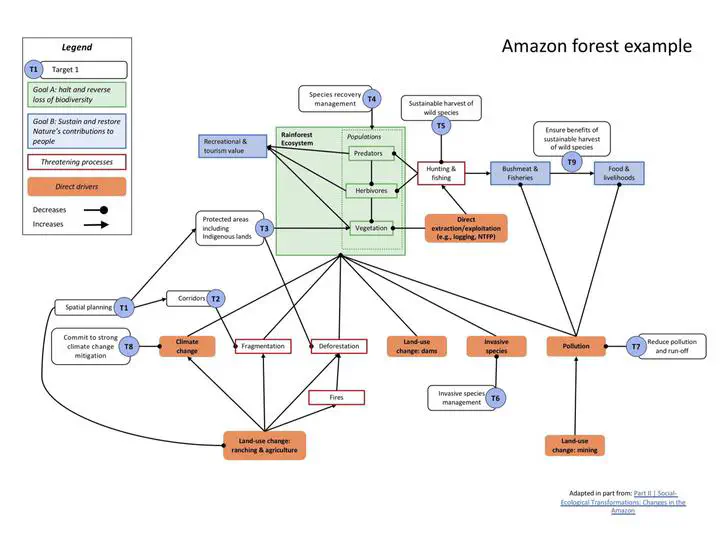Transformative actions on all drivers of biodiversity loss are urgently required to achieve the global goals by 2050

Abstract
Key Messages The eight Key Messages of this synthesis are highlighted below and are expanded upon in the Executive Summary. Cross-references to the findings in the Executive Summary are indicated by {ES#}. Key Message 1: High levels of ambition for halting and reversing biodiversity loss (Goal A) cannot be met without transformative change which is a “fundamental, system-wide reorganization across technological, economic and social factors, including paradigms, goals and values, needed for the conservation and sustainable use of biodiversity, long- term human well-being and sustainable development” {ES1, ES2}. Key Message 2: Achieving ambitious objectives for ecosystems, species and genetic diversity (Goal A) depends on a comprehensive portfolio of actions to reduce all of the direct threats to biodiversity from land and sea use change, direct exploitation of organisms, climate change, pollution, invasive alien species and their interactions {ES1, ES3}. Key Message 3: Global targets of the GBF provide an important template for action, but it is how these targets are implemented and how actions are coordinated across local, national and international levels that will determine success in achieving objectives for biodiversity. Regular assessments of the implementation of targets and their contributions to progress towards clearly defined goals and milestones for biodiversity are therefore vital elements of the GBF {ES4}. Key Message 4: Reversing biodiversity loss will require addressing threats to biodiversity in both natural and managed ecosystems, as well as the interconnections between them. “Natural” and “managed” ecosystems differ in their species and genetic composition, ecosystem functions and supply of benefits to people, hence the targets for action, reference states, monitoring requirements and relevant indicators differ between them {ES5}. Key Message 5: All dimensions of biodiversity — genetic, trait, population, species, community and ecosystem — show interlinked responses to human drivers. Efforts to mitigate the effects of drivers on one dimension (e.g., population abundances) will depend on action on other dimensions (e.g., genetic diversity). Knowledge of the interlinked relationships between dimensions of biodiversity can be used to guide prioritization for conservation {ES6}. Key Message 6: Ambitious action is needed as soon as possible and must be sustained over time if we are to put biodiversity on a trend to recovery by mid-century. There is good evidence that while some dimensions of biodiversity recover rapidly following conservation action, many show long-lasting, or time-delayed, changes in response to actions to mitigate the effects of drivers {ES7}. Key Message 7: The degree of biodiversity change, and relative importance of drivers, vary greatly across scales and from place to place, and drivers in one place can affect biodiversity far away in other places {ES8}. Key Message 8: Successful implementation of the GBF requires substantial investment in monitoring capacity to detect change and attribute drivers. There is a need to ensure the supply of, and access to, data that underpin the effective use of indicators to track progress and guide action needed to implement the GBF at local, national and international levels. The set of indicators for monitoring progress to Goal A of the GBF should be expanded to comprehensively cover outcomes, drivers and actions and the interdependencies between them {ES9}.